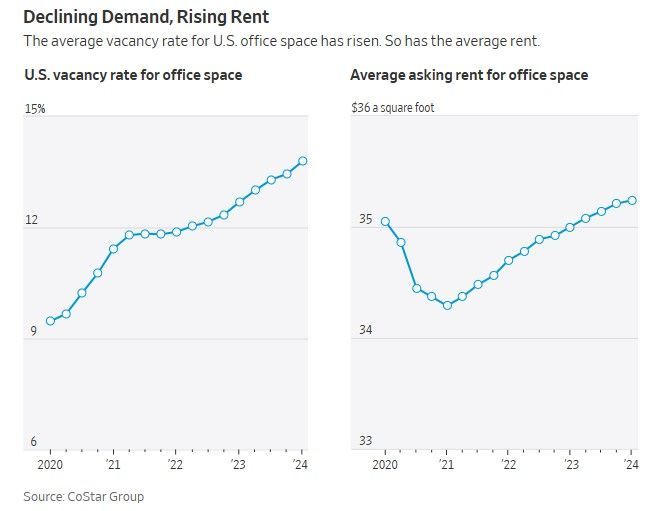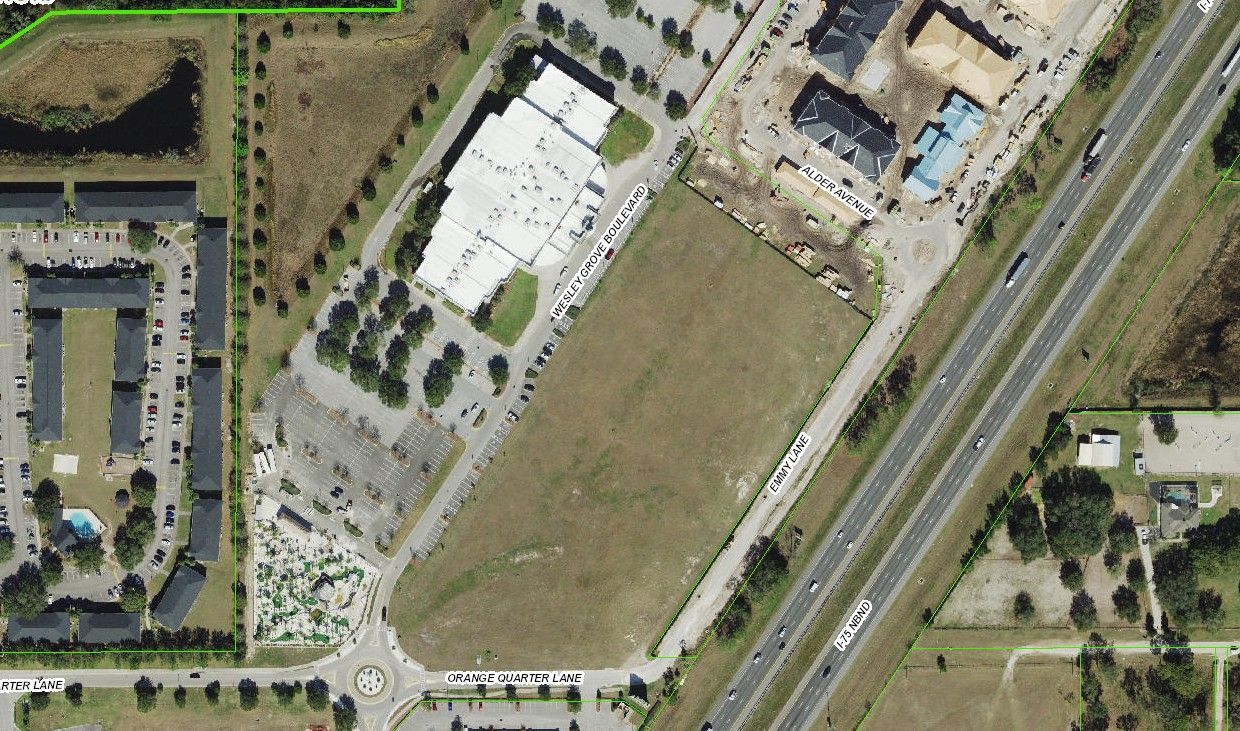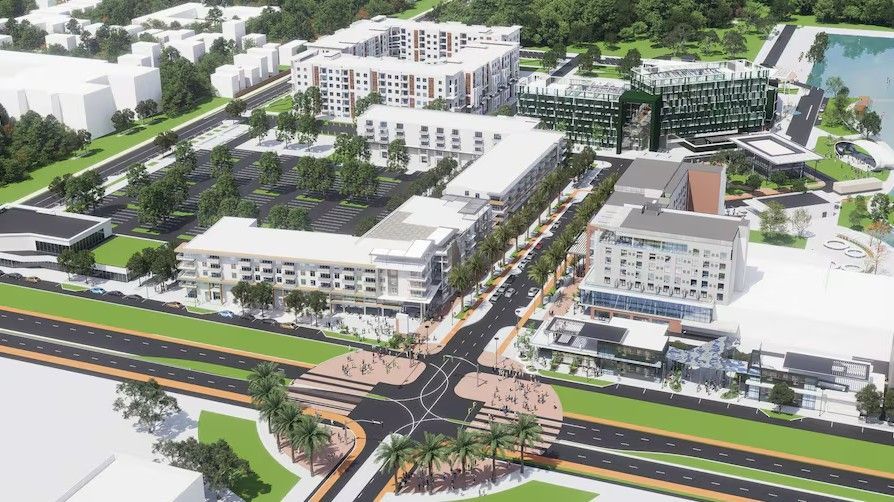The U.S. Office Market Continues to see steady or climbing rents despite concerns surrounding high vacancy rates

According to the Wall Street Journal, U.S. office markets are facing significant challenges with rising vacancy rates, an unprecedented amount of sublease space available, and increasing defaults. Despite these challenges, office rents remain stable or are even on the rise.
Data from CoStar Group reveals that the average asking rent for U.S. office spaces is currently $35.24 per square foot, up from $34.92 in the fourth quarter of 2019. This increase in asking rents highlights the unique dynamics of the commercial real estate market. Rents play a crucial role in determining a property's value, and property owners are reluctant to reduce them. This reluctance stems from the fact that lowering rents can negatively impact the appraised value of their buildings, potentially leading to loan defaults or difficulties in refinancing, as noted by David Bitner, head of global research for Newmark Group.
Experts anticipate that office rents will eventually decline, especially as property owners and lenders are compelled to restructure mortgages or sell distressed properties. In the meantime, landlords are offering attractive incentives to lure tenants, such as costly interior build-outs, extended periods of free occupancy, and other perks. Phil Mobley, CoStar's national director of office analytics, mentioned instances where tenants were offered a year of free rent for a 10-year lease term, a departure from the previous standard of one month free rent for every two years.
However, this strategy of offering incentives may be reaching its limits. Record-high office vacancy rates continue to climb as companies, many of which have adopted flexible workplace strategies during the pandemic, require less office space. According to CoStar, businesses occupy 200 million square feet less than they did before the recession, with an additional 150 million square feet of "negative absorption" expected in the next two years.
The delinquency rate for office mortgages that have been securitized has surged to 6.63%, more than triple the rate of 1.87% in January 2020, according to Trepp. As a result, some properties will undergo restructuring, sales, or foreclosures, resetting property values to reflect actual market conditions rather than inflated rents. An MSCI index indicates that the average value of office buildings in central business districts has dropped by nearly 41% from July 2022 to the beginning of this year.
As new owners acquire properties at these reduced prices, they will have less need to maintain high rents. In fact, they may be incentivized to lower rents to attract tenants away from competitors. Cities like San Francisco, which has experienced distressed property sales, are already witnessing sharp declines in asking rents. CoStar reports that average prices have fallen to $53.78 per square foot in the first quarter of this year, down from $75.93 in the fourth quarter of 2019.
Adyen, a global fintech firm, recently secured 150,000 square feet of sublease space in San Francisco for its North American headquarters. Davi Strazza, president of Adyen North America, acknowledged that the deal reflected the current market conditions. With more than 70% of current office leases signed before the pandemic, many businesses are poised to benefit from softer market conditions when their leases come up for renewal.
Companies adopting hybrid workplace strategies are also contributing to the downward pressure on office rents. According to Scoop Technologies, which tracks workplace strategies, companies with hybrid approaches required employees to be in the office an average of 2.57 days in February, only a slight increase from 2.49 days a year ago. As these companies renew their leases, they tend to occupy less space, further pushing down rents, as observed by Rob Sadow, CEO of Scoop.
Source: The Wall Street Journal
Thank you for your interest. If you are in need of Appraisal & Valuation services in the West Central Florida Market, contact:
Mike Cliggitt, MAI, MRICS, CCIM
813.405.1705 | 863.661.1165 - Direct Lines
SHARE CONTENT





